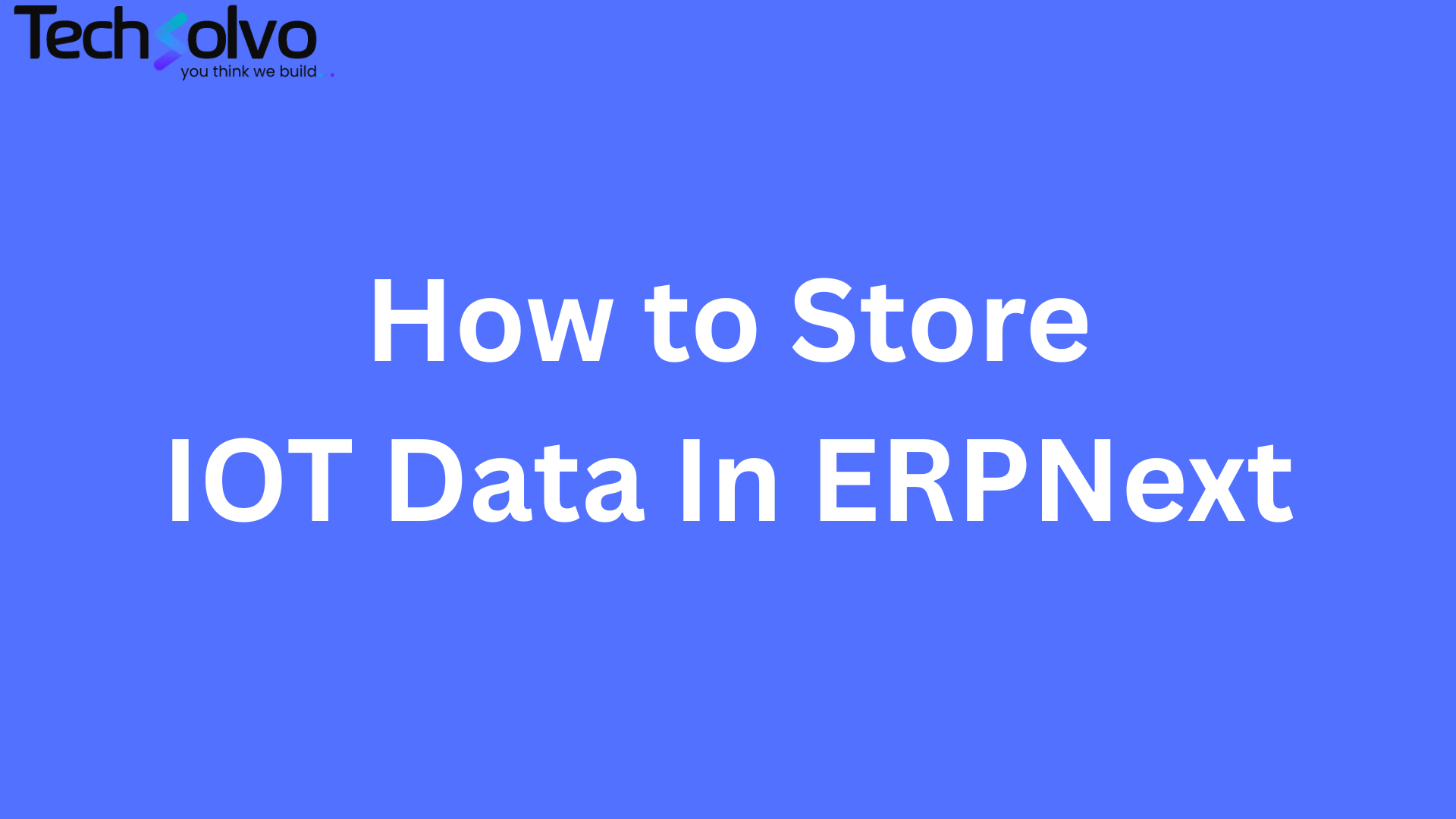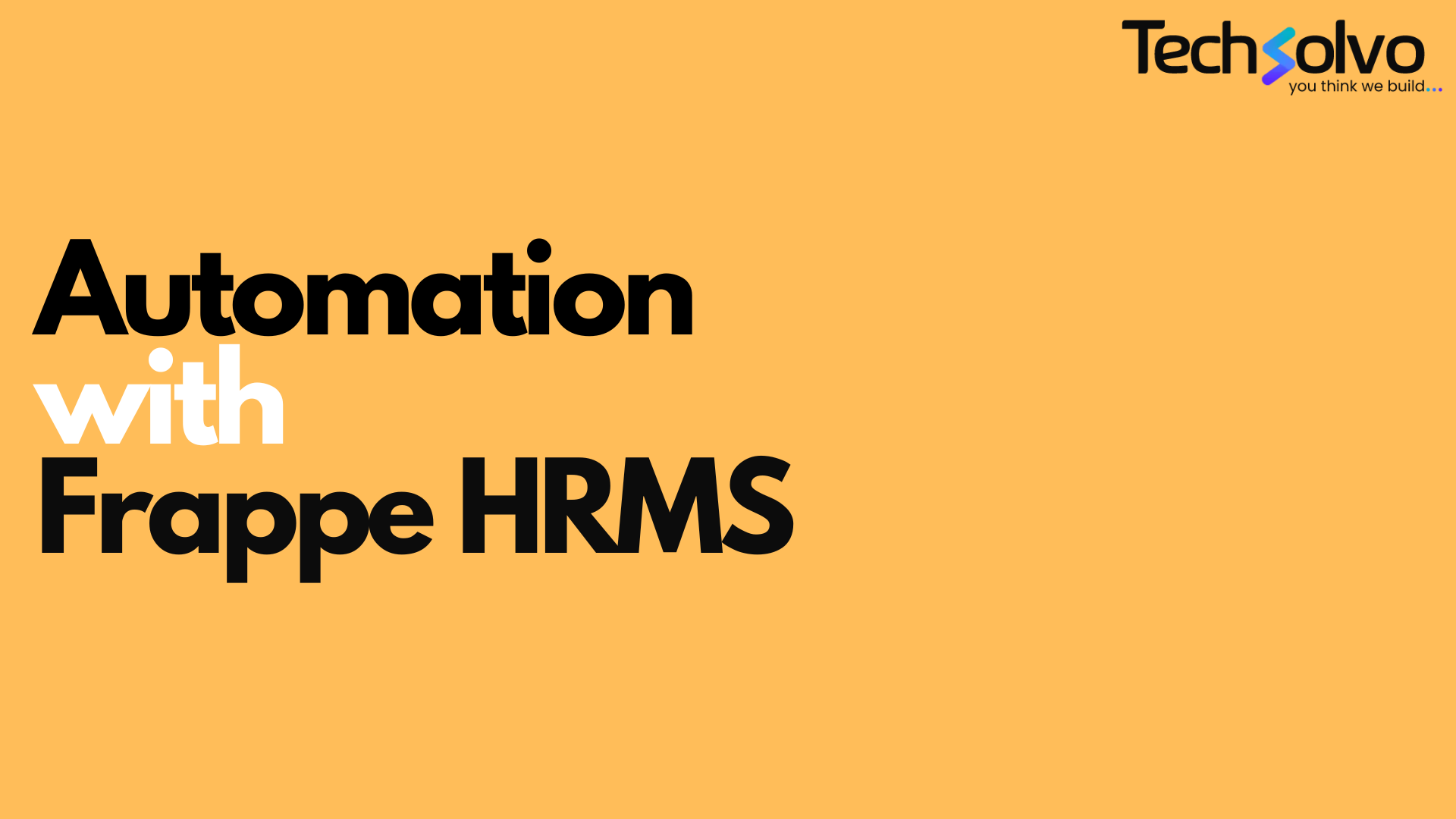Techsolvo's Enterprise Computer Vision: Unleashing Visual Intelligence for Business Advancement
-
Precision Image and Video Recognition: Elevate your enterprise with Techsolvo's Computer Vision, providing precise image and video recognition for extracting valuable insights from visual data.
-
Advanced Object Detection and Tracking: Harness cutting-edge technologies for object detection and tracking, optimizing workflows, enhancing security, and fostering operational efficiency.
-
Tailored Solutions for Business Innovation: Techsolvo offers customized Computer Vision solutions, ensuring seamless integration into your enterprise processes for innovation and strategic growth.
-
Actionable Insights for Informed Decision-Making: Empower your business with actionable insights derived from visual data, enabling informed decision-making and strategic planning.
-
Efficient Workflows and Enhanced Security: Techsolvo's Computer Vision services contribute to optimized workflows and heightened security measures, positioning your enterprise at the forefront of technological advancement.
Computer Vision Development Platforms
Frequently Asked Questions
Computer vision is a field of technology that enables computers to interpret and understand visual information from the world, much like the human visual system. It involves teaching computers to process, analyze, and make decisions based on images or videos. This can include tasks such as object recognition, image classification, and tracking movements.
Deep learning has revolutionized computer vision in recent years. Deep learning models, such as convolutional neural networks (CNNs), can learn complex features from large datasets of images and videos, leading to significantly improved performance on various tasks.
A computer "seeing" an image involves the use of digital sensors and processing algorithms. The process involves converting the visual information into a digital format, processing it using algorithms to extract meaningful features, and then interpreting and making sense of the content within the image.
The choice of pre-processing techniques depends on the specific requirements of the task and the characteristics of the input data. Some powerful pre-processing techniques used in computer vision are, Resizing and Cropping, Edge Detection, Grayscale Conversion, Noise Reduction, Contrast Enhancement, Denoising etc.
Computer vision is a rapidly evolving field, and several exciting trends are shaping its future. Some of the most prominent ones includes, The Metaverse and beyond, Edge computing, Data-centric AI, Multimodal learning, Robotics and automation etc. These are just a glimpse into the exciting future of computer vision. As research and development continue, expect even more transformative applications across various sectors.
Plenty! Extract text from images, analyze scenes and objects, generate image descriptions, moderate content, and even recognize facial emotions. It's like having a pre-trained AI vision sidekick.
Absolutely! No need to build complex machine learning models from scratch. The APIs are well-documented and offer various SDKs for seamless integration into your projects.
Yes, the Computer Vision API supports various formats like JPEG, PNG, and even GIFs. You can process images from URLs, local storage, or even live streams!
You only pay for what you use! Azure Cognitive Services offer a pay-per-use pricing model, making it budget-friendly for small projects and scalable for larger ones.
Microsoft has tons of resources for you! Documentation, tutorials, code samples, and even a vibrant community forum await. Dive in and unleash your computer vision creativity!
It's a cloud-based computer vision service that uses machine learning to analyze images and videos. It can identify objects, people, text, scenes, and activities, and can also perform facial recognition and image moderation.
You can use it to build a variety of applications, such as image and video search, image and video classification, facial recognition, and anomaly detection.
Amazon Rekognition is designed to be easy to use, even if you don't have any experience with machine learning. It has a simple API that you can use to call its various features.
You pay only for the images and videos you analyze. There is also a free tier with limited usage.
There are a variety of resources available on the Amazon Rekognition website, including documentation, tutorials, and sample code.
A Google Cloud Vision AI developer leverages machine learning models to extract insights from images and videos. Think object detection, text recognition, and image labeling!
From auto-tagging photos for search to automating quality control on production lines, the possibilities are endless! Build custom tools, integrate AI into existing apps, or use pre-trained models to get started fast.
Vertex AI Vision offers a managed environment, perfect even for beginners. Build and deploy applications without managing infrastructure. AutoML Vision can even train custom models from your data if you don't have coding experience.
Vision AI offers flexible pricing based on your needs. Free trials and generous credits for new users mean you can explore before committing. Plus, pay-as-you-go options make scaling effortless.
Extensive documentation, code samples, and tutorials guide your journey. Join the vibrant Google Cloud community for tips and support. Dive in and unleash the power of computer vision!
Clarifai is a platform for building computer vision apps using their pre-trained AI models and APIs. Imagine analyzing images and videos for objects, scenes, faces, and more, without coding complex algorithms.
Possibilities are endless! Develop image search engines, automate image tagging, build facial recognition systems, or extract text from images – all powered by Clarifai's AI.
Not necessarily! Clarifai offers pre-trained models and intuitive tools, making AI accessible even for beginners. However, deeper model customization requires advanced programming skills.
There's a free tier for testing and learning, but most serious projects will require a paid plan. Prices vary depending on your needs, from individual developer rates to enterprise solutions.
Dive into Clarifai's extensive documentation, tutorials, and code samples. Their supportive community forum and helpful customer support are also great resources.
It develops computer vision applications using OpenCV libraries for tasks like image recognition, object detection, tracking, and analysis. May also involve building custom algorithms, optimizing performance, and integrating with other software.
Strong C++/Python, image processing algorithms, understanding of computer vision concepts like feature detection, object tracking, and machine learning. Familiarity with OpenCV libraries and frameworks like TensorFlow/PyTorch is a plus.
Robotics, autonomous vehicles, medical imaging, security and surveillance, augmented reality, and many more.
Growing demand due to increasing adoption of computer vision in various industries. Competitive salaries and ample job opportunities for skilled developers.
Learn C++/Python, study computer vision fundamentals, practice with OpenCV tutorials and projects, build a portfolio showcasing your skills, and contribute to open-source projects.
PaddlePaddle shines in ease of use, flexibility, and efficiency. Its Python-like API and dynamic graph make coding intuitive, while its hybrid architecture allows seamless switching between CPUs and GPUs for optimal performance.
PaddlePaddle boasts a rich library of pre-trained models for image classification, object detection, segmentation, and more. These models, fine-tuned on massive datasets, can jumpstart your project, saving you time and effort.
PaddlePaddle offers various deployment options, from edge devices to cloud platforms. Its lightweight inference engine ensures models run efficiently on diverse hardware, making them ready for real-world applications.
PaddlePaddle provides extensive documentation, tutorials, and code examples, catering to all skill levels. Additionally, online courses and workshops guide you through specific CV tasks, empowering you to build cutting-edge solutions.
Absolutely! PaddlePaddle has a thriving community of developers and researchers offering active support through forums, documentation, and tutorials. You'll find answers to your questions and connect with like-minded individuals.
Lightning streamlines boilerplate, training loops, and hyperparameter tuning for common vision tasks like image classification, object detection, and segmentation.
Absolutely! PyTorch Lightning seamlessly integrates with your custom computer vision models, allowing you to leverage its features without sacrificing flexibility.
PyTorch Lightning provides pre-built components for popular transfer learning tasks like image classification and object detection. You can fine-tune these models or build your own custom pipelines on top of them.
The PyTorch Lightning documentation is extensive and constantly updated, with specific examples and tutorials tailored for computer vision development. Their active community forum also provides valuable support.
PyTorch Lightning simplifies complex workflows, promotes code reusability, and accelerates development cycles. By focusing on your model logic, you can build robust and maintainable CV projects faster.
Think AI-powered smart cities - NVIDIA Metropolis is a platform with tools and libraries for developers to build intelligent video analytics applications. Traffic monitoring, retail analytics, and security systems are just a few examples.
Metropolis offers pre-trained AI models, optimized libraries for NVIDIA GPUs, and access to a developer community. This saves time, boosts performance, and provides valuable learning resources.
Object detection, tracking, anomaly detection, and facial recognition are all within reach with Metropolis. You can even build custom AI models for specific needs.
No! Metropolis offers tools and documentation for developers of all skill levels. You can start with simple applications and scale up as you gain expertise.
The NVIDIA Metropolis developer portal is your one-stop shop. Access resources, tutorials, and join the community to jumpstart your smart city development journey!
TFOD is a powerful open-source library for building and deploying object detection models. It offers pre-trained models like SSD and Faster R-CNN, and allows fine-tuning them for custom datasets.
The API provides tools for transfer learning, allowing you to adapt a pre-trained model to your data with minimal training data. Start with a model pre-trained on similar tasks and adjust the final layers for your specific objects.
The API provides tools for calculating metrics like mean Average Precision (mAP) and Intersection over Union (IoU). Evaluate your model on a held-out validation set to assess itsgeneralizability.
TensorFlow offers tools for exporting your model in various formats (e.g., SavedModel, TFLite) for deployment on different platforms. Consider factors like latency and resource constraints when choosing a deployment method.
It powers self-driving cars, automates security systems, and assists in medical diagnosis. Its versatility makes it a valuable tool for any developer looking to integrate object detection into their computer vision projects.
The original YOLO paper was published in 2016 by Joseph Redmon, Ali Farhadi, and Santosh Divvala. The project has since evolved, with Ultralytics leading the development of recent versions like YOLOv5 and YOLOv8.
YOLO stands out for its speed and accuracy balance. Unlike two-stage detectors, YOLO analyzes the entire image in one pass, making it ideal for real-time applications like self-driving cars and video surveillance.
Different YOLO versions offer varying trade-offs between accuracy and speed. YOLOv5 comes in four sizes: small for lightweight deployments, medium for a good balance, large for higher accuracy, and extra large for top performance. Newer versions like YOLOv8 offer further improvements.
The YOLO community is active and welcoming. You can contribute to open-source repositories like Ultralytics' YOLOv5, discuss on forums, or even create your own custom YOLO models for specific tasks.
Researchers are actively improving YOLO's accuracy, speed, and robustness. We can expect future versions to handle more complex object detection tasks and integrate seamlessly with other AI technologies.
Viso's no-code approach empowers both citizen developers and experienced engineers. Business analysts can quickly prototype, while AI experts leverage pre-built modules and extend functionality with custom code.
Viso Suite tackles diverse tasks like object detection, anomaly detection, and behavior analysis. Build for retail (footfall tracking), manufacturing (defect detection), or security (intrusion detection) – the possibilities are endless.
No-code and low-code tools let you drag-and-drop modules to build pipelines. But experienced developers can tap into advanced features like custom module creation and deep learning model training.
Viso Suite accelerates development, simplifies deployment, and scales seamlessly. You get reduced costs, faster time-to-market, and future-proof applications that adapt to changing needs.
Viso Suite offers extensive documentation, tutorials, and a vibrant community forum. They also provide free trials and demos to let you experience the platform firsthand.
GPUs offer massive parallel processing power, ideal for computationally intensive tasks like image recognition, object detection, and video analysis. CUDA unlocks this power, boosting performance compared to CPUs alone.
Strong C/C++ knowledge is crucial, along with understanding of parallel programming concepts. Familiarity with computer vision algorithms and libraries like OpenCV is also beneficial.
CUDA has a steeper learning curve than traditional CPU programming, but extensive online resources and tutorials from NVIDIA make it approachable.
cuBLAS and cuFFT provide essential math primitives, while Deep Learning libraries like cuDNN and TensorRT accelerate neural network training and inference.
Tech giants like NVIDIA, Google, and Microsoft actively seek CUDA developers for their computer vision initiatives. Additionally, research labs and startups in various fields utilize CUDA expertise.
While not essential, MATLAB excels in rapid prototyping and algorithm exploration, making it popular for research and early development. Libraries like OpenCV offer alternatives for production.
Strong understanding of image processing, linear algebra, and optimization algorithms are vital. Familiarity with toolboxes like Image Processing Toolbox and Computer Vision Toolbox is a plus.
Absolutely! The core computer vision concepts learned in MATLAB translate well to languages like Python and C++, which are often used for production-level deployment.
While its popularity has shifted towards Python for large-scale projects, MATLAB remains a valuable tool for smaller teams and academic research due to its ease of use and rich libraries.
The field is booming, and developers with expertise in both MATLAB and other languages are highly sought-after. Strong problem-solving skills and a passion for innovation are key assets.
Strong understanding of Python and OpenCV libraries, experience with image processing algorithms, familiarity with machine learning concepts for advanced projects.
SimpleCV skills can land you roles in image/video analysis, robotics, augmented reality, medical imaging, and research.
While not as widely used as OpenCV, SimpleCV's beginner-friendly syntax and focus on rapid prototyping make it ideal for learning computer vision fundamentals and building quick prototypes.
Limited functionality compared to OpenCV, smaller community and resource pool, not suitable for highly complex computer vision tasks.
If you're new to computer vision, start with SimpleCV to grasp the core concepts. Once comfortable, transition to OpenCV for more powerful tools and in-depth learning.
BoofCV is an open-source Java library for computer vision algorithms and processing. It provides efficient implementations of common tasks like feature detection, image filtering, and camera calibration.
Strong understanding of computer vision concepts, proficiency in Java programming, and experience with linear algebra and optimization techniques are essential. Familiarity with OpenCV or similar libraries is also beneficial.
The BoofCV project welcomes contributions in various areas, including bug fixes, new algorithm implementations, documentation improvements, and code reviews. Their website outlines contribution guidelines and resources for getting started.
The BoofCV website provides extensive documentation, tutorials, and code examples for various algorithms and functionalities. Additionally, the active community forum offers support and guidance for developers.
BoofCV skills are valuable in various industries like robotics, autonomous vehicles, augmented reality, and medical imaging. Developers can find opportunities in research, development, and engineering roles within these fields.
CAFFE is a deep learning framework specifically designed for computer vision tasks like image recognition and object detection. It offers speed, modularity, and a large community, making it popular for research and development.
Its efficiency and focus on GPUs make it fast for training and deploying models. Plus, its open-source nature and extensive documentation lead to a supportive community and readily available solutions.
While newer frameworks like PyTorch and TensorFlow have gained popularity, CAFFE remains a solid choice for specific tasks. Its simplicity and lightweight design make it ideal for resource-constrained environments.
Compared to newer frameworks, CAFFE has a less intuitive Python interface and limited support for recurrent neural networks, which are crucial for natural language processing and video analysis.
The official CAFFE website, along with its active forum and numerous online tutorials, provide comprehensive documentation and resources to get started with building your own computer vision applications using CAFFE.
OpenVINO is a toolkit from Intel that optimizes and runs AI models on various Intel hardware, including CPUs, GPUs, and VPUs. It's popular for computer vision tasks like object detection, image classification, and facial recognition.
OpenVINO runs on Windows, Linux, and macOS systems with Intel processors. Specific hardware requirements depend on the complexity of your models and desired performance.
The OpenVINO website offers comprehensive documentation, tutorials, and code samples to help you get started. Intel also provides various online communities and forums for support and knowledge sharing.
OpenVINO can be used for a wide range of computer vision tasks, including object detection, image classification, facial recognition, and pose estimation.
OpenVINO can improve the performance and efficiency of computer vision applications by optimizing them for Intel hardware. It can also help to reduce development time and costs.
They build and implement facial recognition systems using deep learning algorithms. This involves tasks like training facial recognition models, optimizing performance, and integrating them into real-world applications.
Strong expertise in computer vision, deep learning frameworks (TensorFlow, PyTorch), and programming languages like Python. Knowledge of facial image processing and biometrics is a plus.
DeepFace powers various applications, from biometric security and law enforcement to personalized marketing and healthcare diagnostics.
Yes, it's a rapidly evolving field requiring continuous learning and adaptation to new algorithms and frameworks. Staying updated on the latest research and advancements is essential.
The demand for DeepFace expertise is rapidly growing due to its increasing applications. With the rise of smart cities and the Internet of Things, skilled developers can expect exciting career opportunities.
It's a platform that lets developers build and deploy tiny machine learning models for computer vision tasks directly on edge devices like microcontrollers. No cloud, no hefty processing power, just real-time inference on the hardware you control.
From object detection and recognition to anomaly detection and tracking, Edge Impulse empowers you to create smart visual applications like face recognition for access control, object counting for inventory management, or even anomaly detection in industrial settings.
While knowledge of Python or C++ helps, Edge Impulse offers a visual drag-and-drop interface to build your models, even for beginners. Plus, plenty of tutorials and pre-trained models get you started quickly.
Edge Impulse works with a wide range of popular microcontrollers and development boards from Arduino and Raspberry Pi to ESP32 and STM32, ensuring flexibility for your project.
The basic platform is free for hobbyists and makers. For professional use with advanced features like team collaboration and deployment tools, paid plans are available.
Gradient is a cloud-based platform built for computer vision development, offering pre-configured environments with GPUs, deep learning frameworks, and popular computer vision libraries.
Gradient streamlines workflows with features like auto-scaling, project collaboration, and model deployment tools. Developers can focus on code, not infrastructure.
Popular frameworks like TensorFlow, PyTorch, and MXNet are readily available, with seamless integration for smooth development.
Absolutely! Gradient provides access to popular computer vision datasets like ImageNet, COCO, and Pascal VOC, saving hours of data preparation.
Gradient scales effortlessly to meet your needs. Train complex models on multiple GPUs, collaborate with teammates, and deploy models to production – all within the platform.
Insights
To properly understand the things that are prevalent in the industries, keeping up-to-date with the news is crucial. Take a look at some of our expertly created blogs, based on full-scale research and statistics on current market conditions.

Unlocking the Power of Data Analytics for IoT Devices with ERPNext
Explore how businesses can gain real-time insights from IoT devices using modern data ana…

How to Store IoT Data Inside ERPNext: A Complete Guide for IoT Companies
A complete guide for IoT and manufacturing companies on integrating machine-generated dat…

Automation in Human Resource Management with Frappe HRMS
Discover how HR automation with Frappe HRMS can streamline HR operations, enhance employe…





































